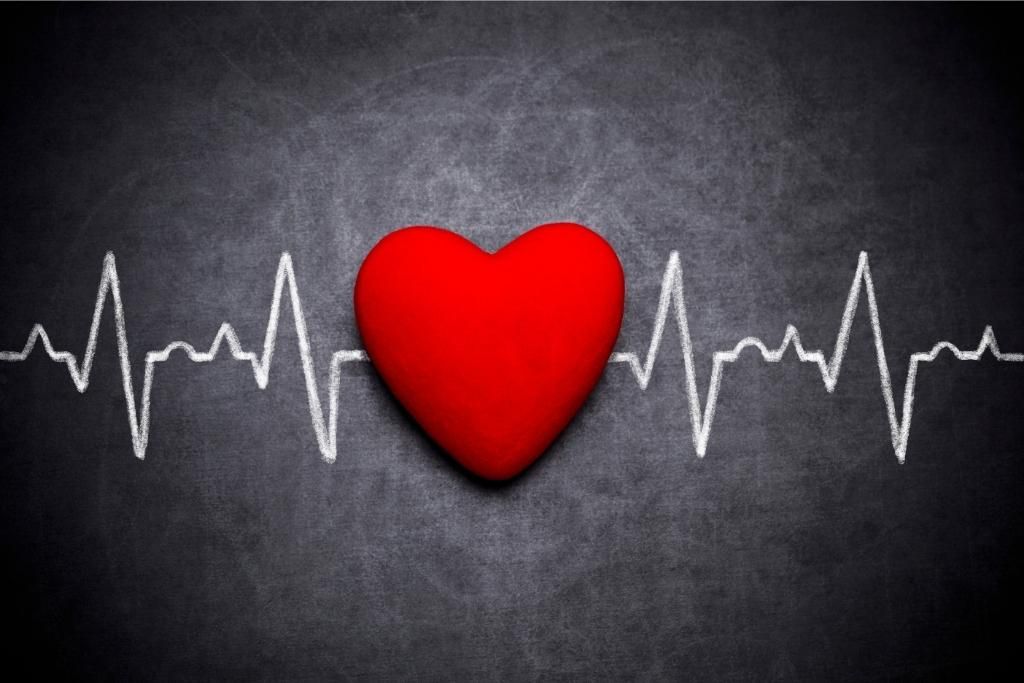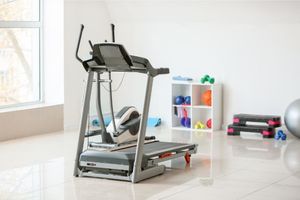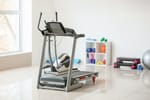Whether you love or hate cardio, it’s an essential fitness component that must not be ignored.
You can’t achieve total fitness without incorporating some form of cardio training into your workout on a consistent basis.
As a reminder, cardiovascular health refers to the well-being of your heart and blood vessels.
A healthy cardiovascular system is one of the keys to preventing strokes, heart disease, heart failure, and other nasty cardio issues.
Most people only think of cardio as a way to burn calories in their attempts to lose weight.
However, cardio training is so much more than that, which you’re about to discover in a few moments.
The most important factor for improving cardiorespiratory fitness (cardio or CR) is the intensity of the workout.
Changes in CR fitness are directly related to how "hard" an aerobic exercise is performed. The more energy expended per unit of time, the greater the intensity of the exercise, and the greater the effect on cardiorespiratory fitness.
You have to know how hard is "hard" to determine if an aerobic exercise like running is producing a CR training effect or if it's just burning a few calories.
The heart rate during work or exercise is an excellent indicator of how much effort you are exerting. Only by keeping track of your heart rate during a workout can you be sure that the intensity is enough to improve your CR fitness level.
In other words, your ability to monitor your heart rate is the single most important key to success in CR training.
Training Heart Rate (THR)= Desired Intensity of the Workout
THR is the heart rate at which you need to exercise to get a training effect. The U.S. Army fitness gurus have given us two methods to determine THR.
The first method, percent maximum heart rate (%MHR) is simpler to use, while the second method, percent heart rate reserve (%HRR) is more accurate.
Maximum Heart Rate Method (%MHR)
With this method, the THR is figured using the estimated maximal heart rate. You can estimate your maximum heart rate (MHR) by subtracting your age from 220. Thus, a 20-year-old would have an estimated maximum heart rate (MHR) of 200 beats per minute (220 – 20 = 200).
A person who is in poor shape should exercise at 70 percent of his MHR; if in relatively good shape, at 80 percent MHR; and, if he or she is in excellent shape, at 90 percent MHR.
Examples:
A 20-year-old in good physical condition would have a THR of 160 beats per minute (BPM). 220 – 20 = 200 * .80 = 160 BPM.
A 30-year-old in good physical condition would have a THR of 152 beats per minute (BPM). 220 – 30 = 190 * .80 = 152 BPM.
A 40-year-old in poor physical condition would have a THR of 126 beats per minute (BPM). 220 – 40 = 180 * .70 = 126 BPM.
Heart Rate Reserve (%HRR Method)
A more accurate way to calculate THR is the %HRR method. The range from 60 to 90 %HRR is the THR range in which people should exercise to improve their CR fitness levels.
If you know your general level of CR fitness, you can determine which percentage of HRR is a good starting point for you.
For example, a person in excellent physical condition could start at 85 percent of his or her HRR; if in reasonably good shape, at 70 percent HRR; and, if in poor shape, at 60 percent HRR.
Most CR workouts should be conducted with a heart rate between 70 to 75 percent HRR to attain, or maintain, an adequate level of fitness.
A person who has reached a high level of fitness may derive more benefit from working at a higher percentage of HRR, particularly if he or she cannot find more than 20 minutes for CR exercise.
Exercising at any lower percentage of HRR than 60 does not give the heart, muscles, and lungs an adequate training stimulus.
Exercising at more than 90 percent can be dangerous. Before anyone begins aerobic training, he or she should know his or her THR (the heart rate at which he or she needs to exercise to get a training effect).
The example below shows how to figure out the THR by using resting heart rate (RHR) and age to estimate heart rate reserve (HRR). A 20-year-old in reasonably good physical shape is an example.
STEP 1: Determine the MHR by subtracting your age from 220. i.e. MHR = 220 - 20 = 200.
STEP 2: Determine the resting heart rate (RHR) in beats per minute (BPM) by counting the resting pulse for 30 seconds, and multiplying the count by two.
A shorter period can be used, but a 30-second count is more accurate. This count should be taken while you are completely relaxed and rested. For this example, we use an RHR of 69 BPM.
STEP 3: Determine the heart rate reserve (HRR) by subtracting the RHR from the estimated MHR. i.e. HRR = 200 - 69 = 131 BPM
STEP 4: Calculate THR by (1) multiplying HRR by the relative fitness level as a percentage and (2) adding the result to the HRR. For example, our 20-year-old in good physical condition will exercise at 70% HRR.
(1) .70 * 131 = 91.7
(2) 91.7 + 69 = 160.7
I highly recommend investing in a good Heart Rate Monitor for the sake of accuracy.
Conclusion
Let’s wrap this up with a quick summary; a reasonably fit 20-year-old with a resting heart rate (RHR) of 69 BPM has a training heart rate (THR) goal of 161 BPM.
During aerobic exercise, the body will usually have reached a "Steady State" after five minutes of exercise, and the heart rate will have leveled off.
At this time and, immediately after exercising, is when you should monitor your heart rate to see if you are within your desired THR range.
If your pulse rate is below the THR, you must exercise harder to increase your pulse to the THR. If your pulse is above the THR, you should reduce the intensity to reduce the pulse rate to the THR goal.
Monitoring, tracking, and calculating your heart rate may seem complicated, but once you go through the simple process that’s been laid out in this article, it’ll get easier.
Besides, knowing your numbers can help you improve your cardiovascular health dramatically.
And nothing is more important than your health, because, without it, the quality of life will not be as good as it could be, especially if you have to struggle with health issues.
Most of us strive for health, wealth, and happiness.
Wealth with bad health still equals a poor quality of life.
So, start adjusting your cardio training based on your heart rate to improve your cardiovascular health.
Download Our Free E-book!







